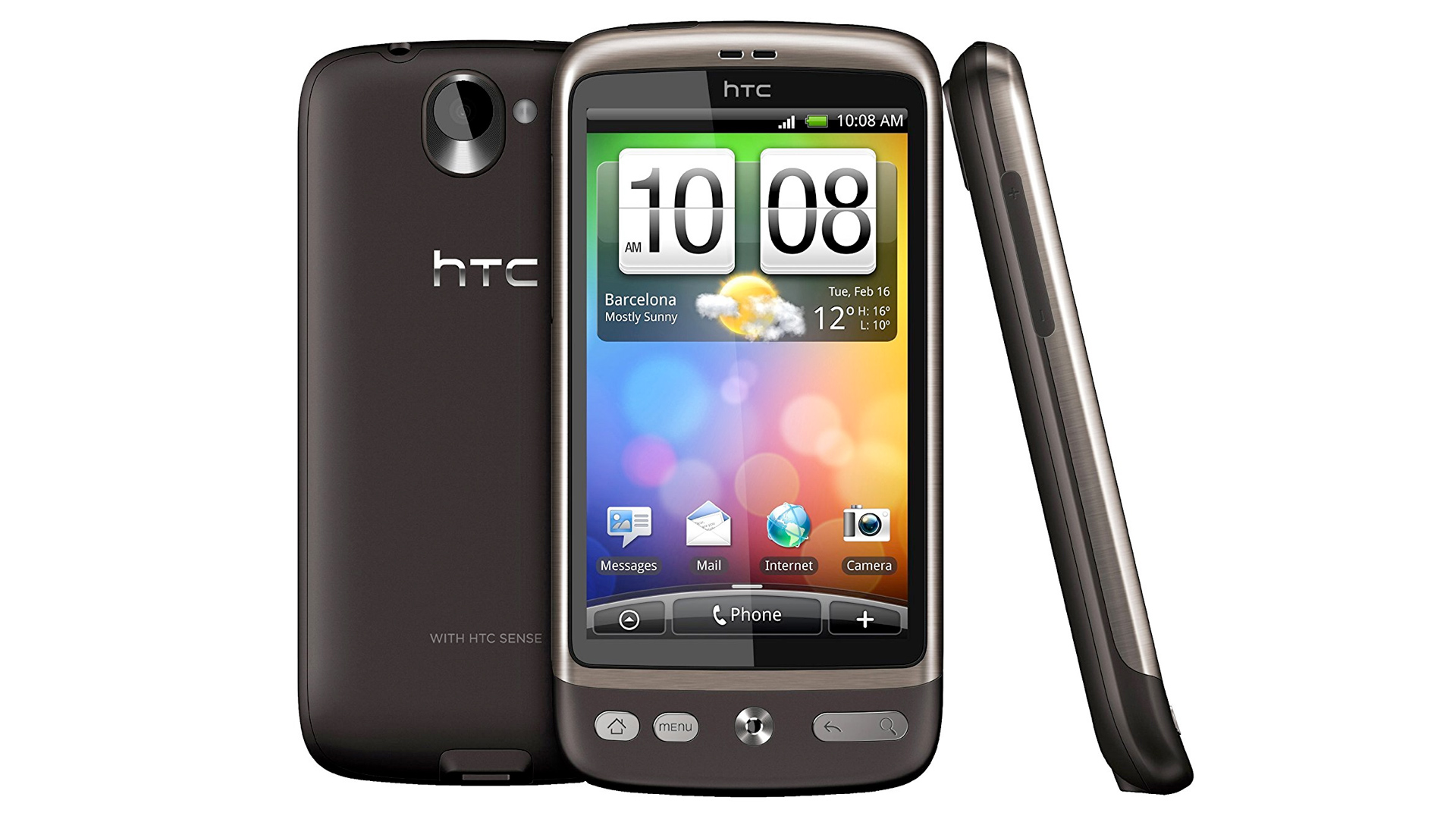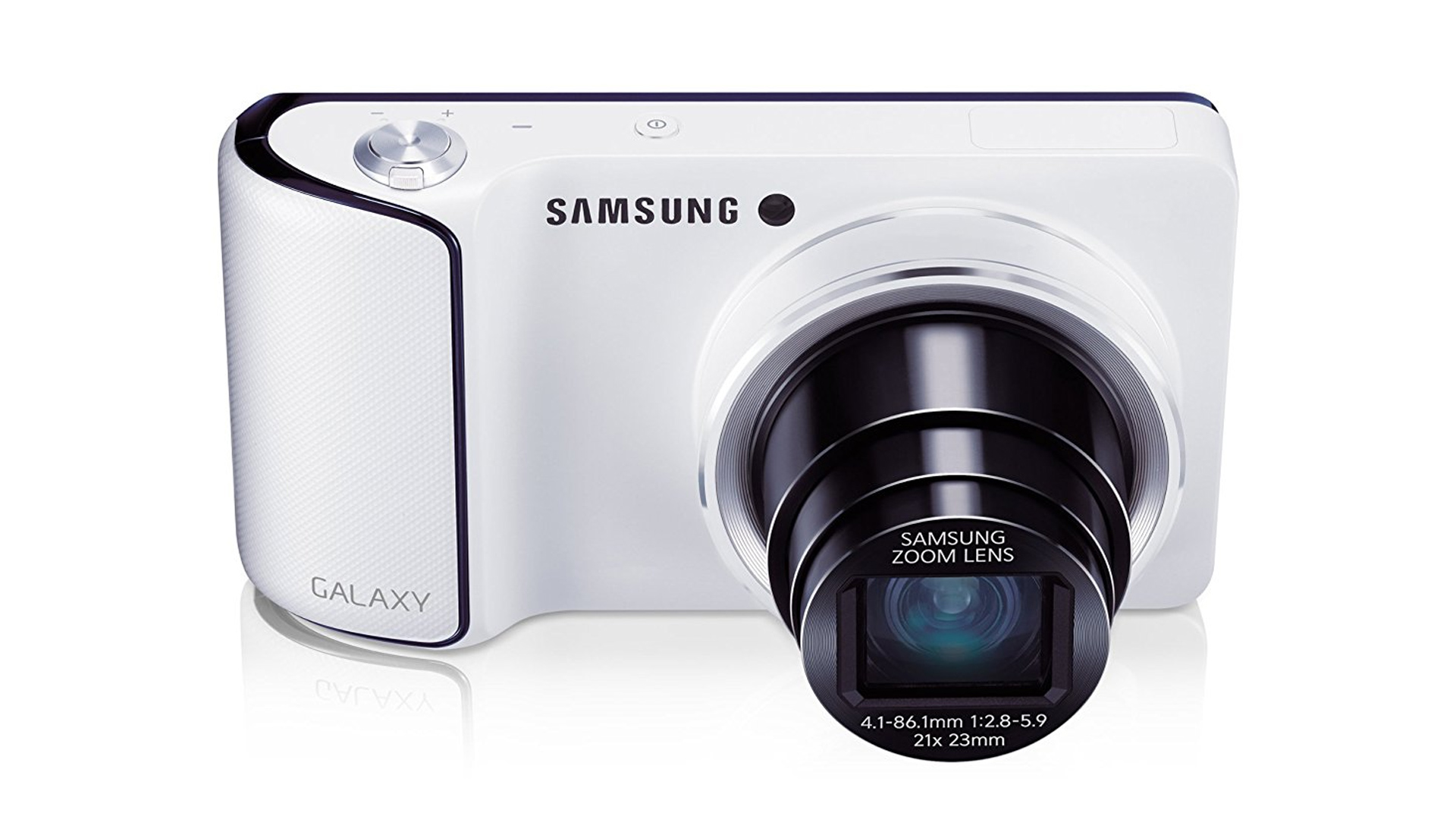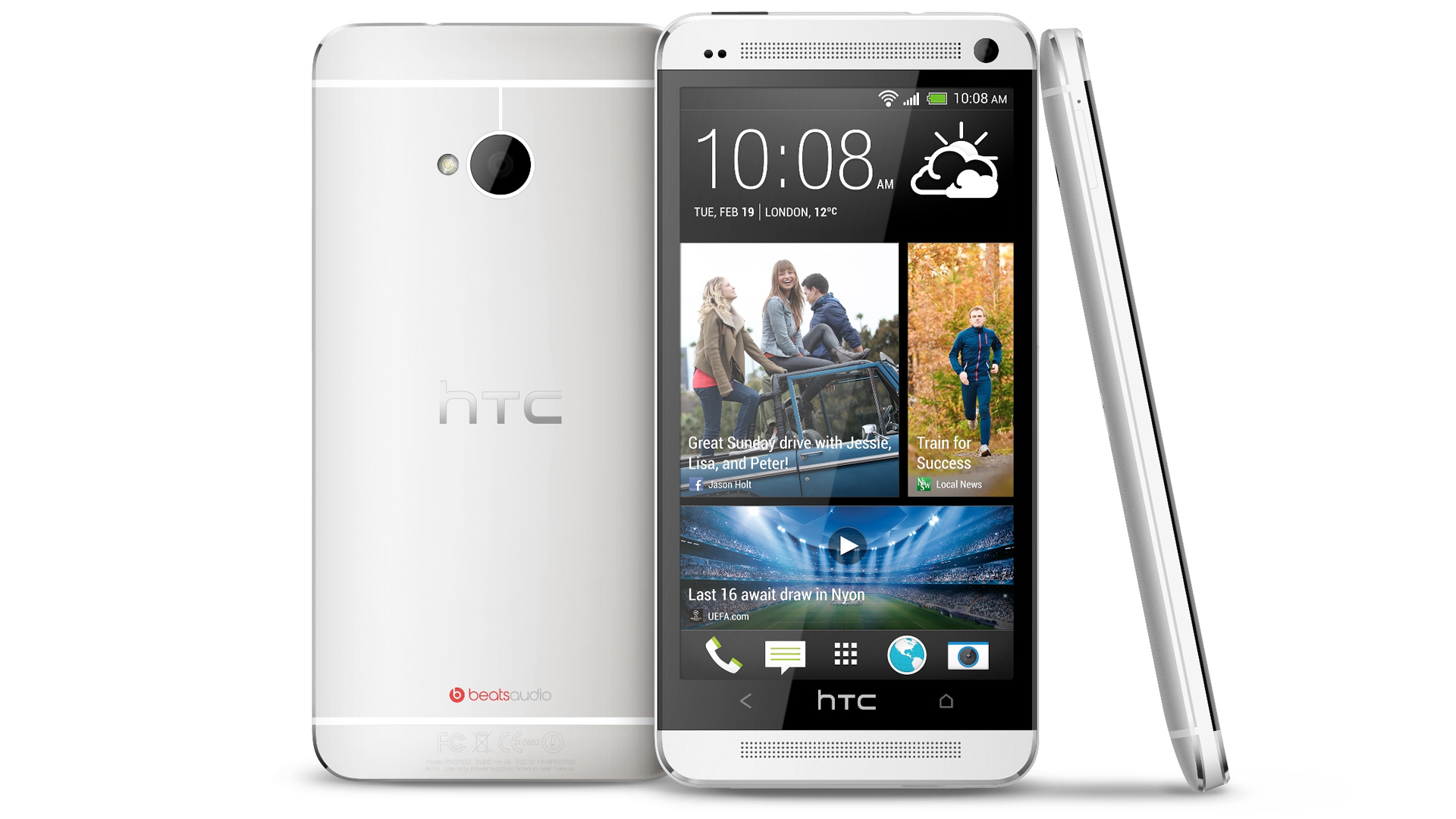History of Android 2008-2017: T3 charts the progression of this revolutionary mobile platform
It has almost been a decade since the first Android phone appeared. We've come a long way.


Introduction
It has almost been a decade since the first Android phone appeared. But what were the most important phones? And when did that feature we all love actually start popping up in the handsets?
Here are the top 25 landmarks in Android, featuring the best bits, more “firsts” than an Oxford alumnus chess club, and a few low points manufacturers would rather forget.
And remember, if you are currently in the market for a top Android phone, then you should plant your peepers on these fine features:

T-Mobile G1 (2008)
The first Android phone to hit the UK was called the T-Mobile G1. However, under the T-Mobile network logo it was really the HTC Dream. These days it’s hard to appreciate quite how much of an Android pioneer HTC was back in the early years of Android. The G1’s design was typical of the system’s very un-Apple approach. It had keyboard that appeared under its slide-out screen, inspired by the BlackBerry phones that were so popular around that time.

HTC Hero (2009)
The first Android phone that gave the iPhone a run for its money in design was the HTC Hero. Looking back it wasn’t quite as pretty as Apple’s iPhone, but the angled “lip”, the recognisable design and glowing trackball made other Android of the time seem ugly. You heard that right: the HTC Hero had a trackball where we’d now see a finger scanner. Because apparently a touchscreen wasn’t enough. What were we thinking?

Samsung Galaxy i7500 (2009)
HTC got to Android way before Samsung, which at the time was still obsessed with its semi-smart TouchWiz phones. Before TouchWiz was an Android front-end it was a full-on smartphone (ish) OS. Back in 2009 you wouldn’t have guessed the leviathan the Galaxy series would become. The Galaxy i7500U had slightly awkward looks, with nothing like the style or panache of HTC’s Androids of the time. But, hey, the first Samsung Android matters.

Motorola Dext (2009)
Motorola’s first Android phones were the Dext and the Milestone, also known as the Droid in the US. At the time Motorola was known for it ultra-popular slider Razr phones. Aiming for the same sort of younger audience that loved those mobiles, the Dext aimed at social networking, with a Facebook/Twitter loving interface and a keyboard. At this point Twitter was still for early adopters. It’s funny now that a phone keyboard is something you imagine a technophobic grandad typing on. Or an arch hipster.

LG GW620 (2009)
Believe it or not, this was LG’s first Android phone: the LG GW620. We remember it from back in the day. Like most manufacturers, LG’s first attempt didn’t suddenly change the game. However, it did have a different approach to Samsung and HTC’s phones at this point, with a screen that slid up to reveal a landscape keyboard. This was the later period of getting us weaned off physical phone keyboards.

(HTC) Nexus One (2010)
The first “official” Google phone was released around 18 months after the first. It was called the Nexus One and was made by HTC. That was a good choice as the company was making some of the most attractive phones around. Highlights included a “sharp” 3.7in 480 x 800 pixel AMOLED screen, a lovely aluminium frame and Google’s new Android 2.1 software. It added features like being able to merge email inboxes, Google Earth and voice control. Welcome to the future.

Samsung Galaxy S i9000 (2010)
This is where Samsung’s Android phones suddenly clicked into gear. The first of the Galaxy S phones was immediately impressive, not least because of its “huge” 4in Super AMOLED screen. Back in 2010 that size really did seem big. What were we thinking? This was long before Samsung sorted out its build quality chops, though, and the phone had a shiny plastic back that didn’t look too hot next to HTC’s models. It was a smash hit, though, selling 24 million.

HTC Desire (2010)
2010 is when Android’s great Nintendo vs Sony-a-like rivalry emerged. For a few years at least, it was fought between HTC, Samsung and Sony Ericsson. HTC’s Desire was the phone that locked horns with the original Samsung Galaxy S. It was a bronze brown adonis, with better looks than the Samsung. However, the Galaxy S had a bigger screen and a slimmer frame. Weirdly enough, this is one of the few phones that has changed dramatically over the course of its life. It started with an AMOLED screen, before switching to an LCD panel in later batches, no doubt thanks to Samsung “Bogarting” the panels for itself, which it does to this day.

HTC Legend (2010)
In 2010 the HTC Legend was the mid-range alternative to the HTC Desire. However, this was perhaps the best-looking Android phone of the year thanks to its unibody aluminium design. It even beat the iPhone 4 to market by around six months. The iPhone 3GS had a glossy plastic back, which today doesn’t seem all that impressive, all that “Apple”.

Sony Ericsson Xperia X10 (2010)
The first killer Sony Android phone wasn’t a Sony phone at all. It was a Sony Ericsson. The Xperia X10 arrived just the year before Sony and Ericsson split, and roughly established the blueprint for Xperia phones to this day. However, at the time it didn’t quite match up to the HTC and Samsung rivals. It didn’t even have multi-touch until the year after release.

LG Optimus 3D (2011)
Many people think dual rear cameras have only been around for a couple of years. However, LG and HTC made such phones way back in 2011. The LG Optimus 3D didn't use its two rear eyes for background blur like today’s models, though. It took actual 3D photos and could display them on its very own 3D screen. It still sounds like future tech today. Is it future tech we want? Not really.

Samsung Galaxy Note (2011)
The Note series began in 2011. Most of us thought it was a phone just for nerds to start with, even some at Samsung. However, after it racked-up 10 million sales in a year, we all had to take the Note a bit more seriously. It debuted the Samsung phone stylus, which for years we’d lust after. And then barely use when we actually got hold of one.

(LG) Google Nexus 4 (2012)
2012 was a very strong year for LG. It was behind the fourth Nexus phone, the Nexus 4. This was one of the first phones to offer an experience comparable with some of today’s phones. We’re talking about a high-res 768p display, fair quad-core CPU and glass back. It was also fantastic value at £239.

Samsung Galaxy Camera (2012)
Samsung has experimented with Android a few times over the years. The Samsung Galaxy Camera was one of its more interesting experimental devices. It wasn’t really designed to be used as a phone, but did take a SIM card. This was, aside from the lack of a dialler, an Android phone attached to a compact camera with a giant 21x digital zoom. As the camera nuts pointed out, though, it didn’t actually have as large a sensor as a compact system camera so image quality was just OK.

HTC One (2013)
After being the strongest force in Android during the platform’s earliest years, HTC spent a bit of time in the wilderness in 2011-2012 with Desire and One series phones that failed to stand out. That all changed in 2013 with the HTC One, later known as the One M7. It racked up more adulation and awards than any HTC phone since the first Desire. The HTC One was also the first phone to use the UltraPixel camera. It only had four megapixels, but was based on the same large sensor pixel concept the best phone cameras still use.

Sony Xperia Z (2013)
The Sony Xperia flagship series as we know it began in 2013 with the Xperia Z, refining what Sony made the year before with the Xperia S, and coining the term “OmniBalance”. Sony would trot this marketing term out for years, and it was all about design symmetry. This was also when Sony started to push water resistance, with IP57 certification. You needed to keep a couple of flaps in place, but this would let you dunk the phone in water. Until four weeks in one of the seals would get slightly damaged and you’d end up with a dead phone after showing off in the pub.

LG G2 (2013)
Best LG-brand phone to date? In 2013, easily. The LG G2 was a phone that made LG a serious alternative to Samsung Galaxy and iPhone mobiles for the average buyer. Cheaper than its direct rivals and with top core specs like a 5.2in 1080p screen, this phone wouldn’t look too bad even today. At the time we were a little too bowled over by the HTC One and Galaxy S4 to really appreciate this phone. But it’s one whose memories have only grown rosier over the years.

Huawei Ascend P1 (2012)
For years, we knew Huawei as a company that made dongles and phones for networks. However in 2012 it stepped out into the spotlight with its first own-brand high-end phone, the Ascend P1. It may not have blown Samsung Galaxys out of the sky, but got a good critical reception and made way for the P-series phones that followed. For a while Huawei milked the “thin” angle, and claimed the P1 was the thinnest phone around at 7.7mm thick.

Motorola Moto G (2013)
The best budget Android phone series of all time began in 2013. And very quickly became the most important part of Motorola’s line-up. The Motorola Moto G got almost everything right, focusing on the core experience of using the phone and getting rid of manufacturer ego by using an almost untouched version of Android. The camera was rubbish, but Motorola would fix that with the third-generation Moto G in 2015.

OnePlus One (2014)
The OnePlus experiment began in 2014 as a secret experimental offshoot of Oppo, one of the top Chinese phone-makers. The question it asked: how far can a phone get with viral marketing? Very, very far, it turns out. But only because the cheeky online teasers were matched with the best-value hardware of the year. At its launch in June 2014, there was so much demand for the OnePlus One you needed a special invite just to get a chance to order the phone. It sold more than a million before the year was over. Thankfully, we no longer have to beg to buy a OnePlus phone.

Samsung Galaxy S6 (2015)
You might not remember the Galaxy S6 and S6 Edge as one of the most important changing points in Samsung’s Android history. However, it was. This was the year Samsung switched from making mostly-plastic phones to ones made of ultra-premium materials like aluminium and glass. The Galaxy S6 had a glass front and back, with aluminium sides. Samsung’s Edge model went further, with the curved glass sides we saw the year before in the Note Edge.

BlackBerry Priv (2015/2016)
BlackBerry finally gave in and made an Android phone in 2015, the BlackBerry Priv, But it couldn’t forget its past completely, with a screen that slid up to reveal a little keyboard just like the ones we remember from classic BlackBerry Bold models. Most agreed the Priv was a good phone. Apart from potential buyers. Sales were poor, nixing BlackBerry’s hopes of once more becoming one of the big names in phones.

Samsung Galaxy Note 7 (2016)
Everything was looking bright for the Galaxy Note series. With every year we got a new Note with more powerful hardware, better cameras and an improved screen. Just about everyone agreed: these were some of the best phones around. That all, well, blew up with the Note 7. The phone itself was fantastic but faulty battery hardware caused some phones to explode. Samsung recalled the entire line, a nightmare scenario for any phone-maker. Airlines banned the device and eBay even pulled listings for the phone. Bad, bad times.

Google Pixel (2016)
Until 2016, Google phones were Nexus devices. Google then changed the record, switching to the Pixel brand. This let Google finally get rid of having to advertise who actually made the phones. In the past, LG, Samsung, Huawei, Asus and HTC have all had a crack. Pixel phones are, whisper it, still made by HTC, but your average buyer thinks Google makes them. The Pixel and Pixel XL are fast, attractive and have excellent cameras. They weren’t, and aren’t, cheap, though.

Nokia 8 (2017)
Nokia isn’t the “Nokia” some of us remember from 5-10 years ago. However, in 2017 it returned to the phone game with a new flagship phone, the Nokia 8. It’s unlikely to take Nokia back to the glory days of the Nokia N95 or even the Lumia era, but is a true top-end Android. It has a 1440p screen, Snapdragon 835 CPU and dual rear cameras. Its classic gimmick is the “bothie”, a shot using both front and rear cameras. Samsung did this back in the Galaxy S5 days, but let’s give Nokia a break on this one.
Get all the latest news, reviews, deals and buying guides on gorgeous tech, home and active products from the T3 experts

Andrew is a freelance tech and entertainment journalist. He writes for T3, Wired, Forbes, The Guardian, The Standard, TrustedReviews and Shortlist, among others.
Laptop and computing content is his specialism at T3, but he also regularly covers fitness tech, audio and mobile devices.
He began writing about tech full time in 2008, back when the Nintendo Wii was riding high and smartphones were still new.